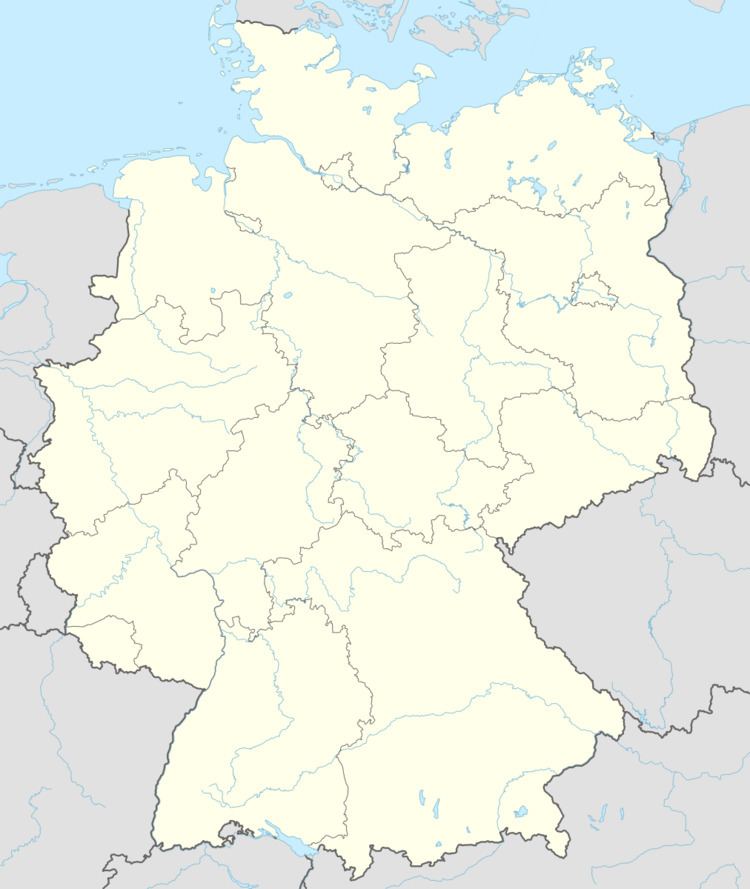Admin. region Mittelfranken Elevation 278 m (912 ft) Population 2,980 (31 Dec 2008) Dialling code 09163 | Municipal assoc. Uehlfeld Area 31.23 km² Postal code 91486 | |
 | ||
District Neustadt a.d.Aisch-Bad Windsheim Weather 19°C, Wind SE at 8 km/h, 43% Humidity | ||
Uehlfeld is a municipality in the district of Neustadt (Aisch)-Bad Windsheim in the administrative region of Middle Franconia in northern Bavaria in Germany.
Contents
Geography
Uehlfeld is located in the valley of the Aisch. The neighbouring municipalities are (from the north in clockwise direction): Lonnerstadt, Höchstadt an der Aisch, Weisendorf, Dachsbach, Gutenstetten, Münchsteinach and Vestenbergsgreuth. The municipality has 12 boroughs: Demantsfürth, Egelsbach, Eselsmühle, Gottesgab, Hohenmühle, Nonnenmühle, Peppenhöchstädt, Rohensaas, Schornweisach, Tragelhöchstädt, Voggendorf und Wallmershof.
History
Uehlfeld was probably founded in the 6th century, at the time Francia expanded to the east and so took possession of the Aischgrund. It is likely that one of the seven Slavonian churches founded by Charlemagne within the Aischgrund stood in Uehlfeld.
The first documented notice of Uehlfeld is from 1123. The village was named Oulentevelt. Later the name changed to Ulletenvelt (1127), Uelevelt (1154), Ulfeldium (1158) or Ulefelt (1181).
Like other villages, Uehlfeld was devastated by several great fires. The last of them occurred in 1888.
Wars have left their marks on Uehlfeld. In the German Peasants' War (1524–1525) the village's castle was destroyed. In the Second Margrave War (1552) the boroughs of Nonndorf and Rothenberg were destroyed and were not rebuilt. The Thirty Years' War left its mark with the actions of Colonel Kehraus, whose troops raided and burned the village.
In 1649 Veit-vom-Berg was assigned pastor of the village. He was born in 1612 in Baudenbach. He held his inaugural speech in front of 31 persons (10 men, 15 women and 6 children), the last inhabitants after a time full of privation. Before the war Uehlfeld had 600 inhabitants. Veit-vom-Berg died in Uehlfeld in 1675. Today the elementary and secondary schools and a street are named after him.
The number of inhabitants did not again reach 600 until the mid-19th century. Until this time many Jewish salesmen came as new citizens to Uehlfeld. So trade and business developed. The Jews built up a synagogue, opened a school and a graveyard, the tombstones of which are still to be seen today. In between the years 1837 and 1933 the Jewish population ranged from 300 to 50 Jewish people. The former headmaster of the elementary and secondary schools, Karl Schmer, compiled the history of Uehlfeld into three almanacs, which can be purchased from the municipality office.
Local council (Marktgemeinderat)
Election March 2014:
Economics and Infrastructure
Several companies have their head office in Uehlfeld. There are also two breweries, one of them founded in 1639, which makes it the oldest brewery in the Aischgrund.
Federal highway B 470 is directed from north to south through the community area.
From July 12, 1904, until May 30, 1976, there was a railway from Neustadt (Aisch) to Demantsfürth-Uehlfeld called Aischtalbahn which led to the railway Nuremberg Würzburg. It was broken down and since then only busses connect Uehlfeld with the surrounding areas. The lines belong to the pay scale area of VGN.
